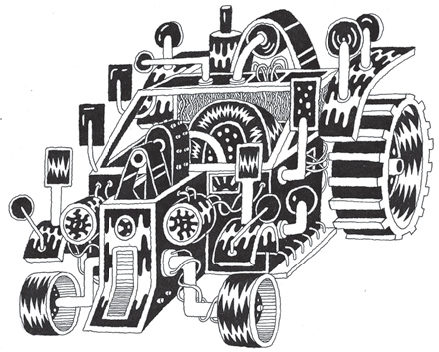
(1) Jeffrey Foucault, Cold Satellite (JeffreyFoucault.com). A collaboration with the poet Lisa Olstein, who wrote the words for Foucault’s drawl—a drawl that sometimes grows a tail so long it curls around itself, with a country feel that puts the people who live in the Nashville charts to shame. Then a deep-ditch electric guitar takes a country song into the blues, and lets it go back where it came from. Nothing is pressed, to the point that sometimes the way the voice pulls away from a word or a guitar from a phrase is its own kind of preciousness—but not in “Twice I Left Her,” which shifts the music into a more resolute kind of quiet, a bigger emptiness in a single room. An acoustic guitar figure comes up against drums buried far away, like a memory. The story creeps out, and stops well short of its end, though you can glimpse it. Foucault drifts over the words so lightly that they seem to fade as they’re sung, and you might stop trying to hear them as words, let them come as sounds.
(2) Cee Lo Green, “Fuck You,” from The Lady Killer (Elektra). The emotions in these three minutes and forty-two seconds are so wonderfully scrambled—I hate you, I hate your money, I hate her for loving your money, I love her anyway, you can keep your money, just let me have her back, but following you both around all over town is better than staying home and hating myself—that every time the singer gets to the chorus, you can imagine that he’s never felt better in his life.
(3) Gary Kamiya, Shadow Knights: The Secret War Against Hitler (Simon & Schuster). From the new Pulp History series, Kamiya’s startlingly immediate text plus documentary photos, maps, and blazing war-comics illustrations by Jeffrey Smith. With crisscrossing stories from Norway, Paris, and London, the tension, the excitement, and the glamour build until you feel like you’re trapped inside of every good antifascist movie ever made. Until the end, in a torture chamber in Dachau, when you are trapped by history.
(4) KT Tunstall, “Uummannaq Song,” from Tiger Suit (Virgin). “Hold your fire—I’m coming out and I’ll tell you the truth”: in the front, her voice is pop, singing harmlessly defiant lines, reaching for a hit and a spread in GQ. But in the back, her shouts are pulling in another direction, where she’s running for her life even though she’s the last person on Earth.
(5) Paul Auster, Sunset Park (Henry Holt). Moving through this tale of Brooklyn squatters are the themes Auster has been pursuing since his...
You have reached your article limit
Sign up for a digital subscription and continue reading all new issues, plus our entire archives, for just $1.50/month.
Already a subscriber? Sign in





